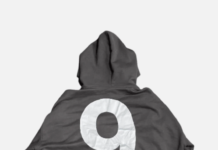In the world of trading, most people get caught up in trying to find the perfect entry. They chase the ideal candlestick pattern, the latest indicator strategy, or a flawless confirmation signal. But what if the real difference-maker wasn’t about when you enter a trade, but rather, how much you’re willing to risk compared to what you hope to gain?
Two key factors that play a major role in your trading success over time are:
- Risk-to-reward ratio
- Win rate (success rate)
As a general rule, smart traders stay away from setups where they’re risking more than they stand to make. For example, if a trade requires a stop loss that’s 90 pips away and the potential profit is only 30 pips, most seasoned traders won’t go near it. Why? Because the odds are stacked against them. You won’t see experienced traders risking three times more than their possible reward—it’s simply not worth it.
In this post, we’ll break down what the risk-to-reward ratio is and how understanding it can significantly improve your performance in the forex market.
What is the Risk-to-Reward Ratio in Trading?
The risk-to-reward ratio (often written as R: R) is a simple but powerful concept in trading. It shows how much you’re willing to risk on a trade compared to how much you aim to make.
In other words, it helps you measure whether a trade is worth taking based on the potential reward versus the potential loss.
A couple of quick examples:
- If you’re risking $1,000 to potentially make $2,000, your risk-to-reward ratio is 1:2.
- If you’re risking $500 to aim for a $1,500 profit, your risk-to-reward ratio is 1:3.
A good R: R ratio gives you a better chance to stay profitable in the long run, even if you don’t win every trade.
Forex Risk-to-Reward Ratio Strategy – How It Works
Is there such a thing as the perfect risk-to-reward ratio strategy in forex? At first glance, it might seem logical to think that the best strategy is the one where you risk very little and aim for huge rewards. A 1:10 ratio sounds amazing, right? Well… not so fast.
In reality, it’s not that simple. Sure, aiming for a 1:10 risk-to-reward ratio looks great on paper, but how often do you find a setup that offers that? And more importantly, how often does that setup work out?
You could spend months staring at the charts and still never come across a reliable 1:10 opportunity. And even if you do, the chances of it hitting your take-profit before stopping out might be slim.
What Profitable Traders Focus On
Traders who make money consistently don’t obsess over the outcome of a single trade. Their focus is on the bigger picture, how their strategy performs over hundreds of trades. This is where the risk-to-reward ratio and success rate come into play. Both are essential to long-term profitability.
Let’s break each one down to see how they work together.
Risk-to-Reward Ratio and Success Rate
To understand how to pick the right risk-to-reward ratio, let’s look at two simple trading scenarios:
Scenario 1:
You’re trading a candlestick pattern like a Doji, which gives you a 50% win rate. In this case, your strategy is a coin toss; it could go either way.
To make money over time, your reward needs to be larger than your risk. Since you’ll only win half the time, you’ll need to make more on your winning trades than you lose on your losing ones.
A ratio of 1:2 or higher would be more suitable here to stay profitable, especially when you factor in fees and spreads.
Scenario 2:
Now, let’s say you have a setup with a 60% success rate. That means you win 6 out of 10 trades. With a win rate like this, you can afford to use a 1:1 risk-to-reward ratio and still come out ahead in the long run.
Your edge is your consistency, not the size of your wins.
How to Calculate the Risk-to-Reward Ratio in Forex
Calculating your R: R is simple and can save you from taking low-quality trades. Here’s how to do it:
Formula:
Risk-to-Reward Ratio = Potential Reward ÷ Potential Risk
Steps:
- Identify your entry point
- Set a stop-loss (your maximum acceptable loss)
- Choose your take-profit (your target gain)
- Subtract your entry price from your stop-loss and take-profit to determine the size of risk and reward
Example:
- Entry: $100
- Stop-loss: $95 → Risk = $5
- Take-profit: $110 → Reward = $10
- Risk-to-Reward Ratio: $10 ÷ $5 = 1:2
Always check your R: R before placing a trade. If the ratio is lower than 1:2, you might want to adjust your levels or skip the trade entirely. A strong risk-to-reward ratio helps you stay profitable even if your win rate isn’t perfect.
Risk-to-Reward Ratio for Trading Precious Metals
When trading precious metals as CFDs, finding the right balance between risk and reward is key. But no magic number fits every situation. The ideal risk-to-reward ratio depends on several factors, such as current market conditions, your personal risk tolerance, your confidence in a trade, your overall strategy, and how long you plan to hold your position.
Active traders who jump in and out of the market more frequently often aim for a 1:1.5 risk-to-reward ratio. This allows for more frequent wins while still keeping risk in check. On the other hand, more patient traders, those who take fewer trades but aim for bigger profits, tend to go for higher ratios like 1:5 or more. These setups may take longer to develop, but can deliver significant gains when they play out successfully.
Risk-to-Reward Ratio for Trading Shares as CFDs
The logic behind choosing a risk-to-reward ratio for trading shares as CFDs is similar to other assets, with factors like market volatility, trading frequency, and individual risk appetite all playing a role. But stocks have their unique behaviour compared to Forex trading online or commodities.
Unlike currency pairs, which tend to move within defined ranges due to economic cycles and central bank policies, stock prices are influenced by company performance, news, earnings reports, and broader market sentiment. This makes stocks more dynamic and often more prone to breakout or reversal setups.
Because of this, stock CFD traders can often find trades that offer attractive risk-to-reward setups, sometimes as high as 1:5 or even 1:10. The key is recognising significant support and resistance levels where breakouts or reversals are likely, allowing for high-reward opportunities while keeping risk manageable.
Risk-to-Reward Ratio for Trading Crypto Derivatives
Crypto CFD trading is a different beast altogether. With extreme volatility and 24/7 markets, crypto assets demand a flexible approach to risk and reward. The best ratio depends on your trading style and strategy. Scalpers who trade frequently and aim for quick profits usually stick with lower ratios like 1:1 or 1:1.5. Their goal is to take small, consistent gains while executing multiple trades throughout the day.
Swing traders who hold positions for a few days or even weeks usually go for higher ratios like 1:2 or 1:3. They look to take advantage of broader price moves while still keeping risk under control.
Then there are trend followers, traders who aim to catch and ride big market trends. While they’re usually very specific about where they enter and place their stop losses, they often don’t have a fixed take-profit target. Instead, they use tools like trailing stops or move their stop-loss into profit territory once the trade goes in their favour. This allows them to potentially capture large moves without capping their upside too early.
In crypto trading, where price swings can be massive, this flexible, adaptive approach to risk-to-reward ratios makes sense. Whether you’re going for small wins or chasing big moves, knowing your strategy and how much you’re willing to risk is essential in navigating the fast-paced world of crypto CFDs.
































